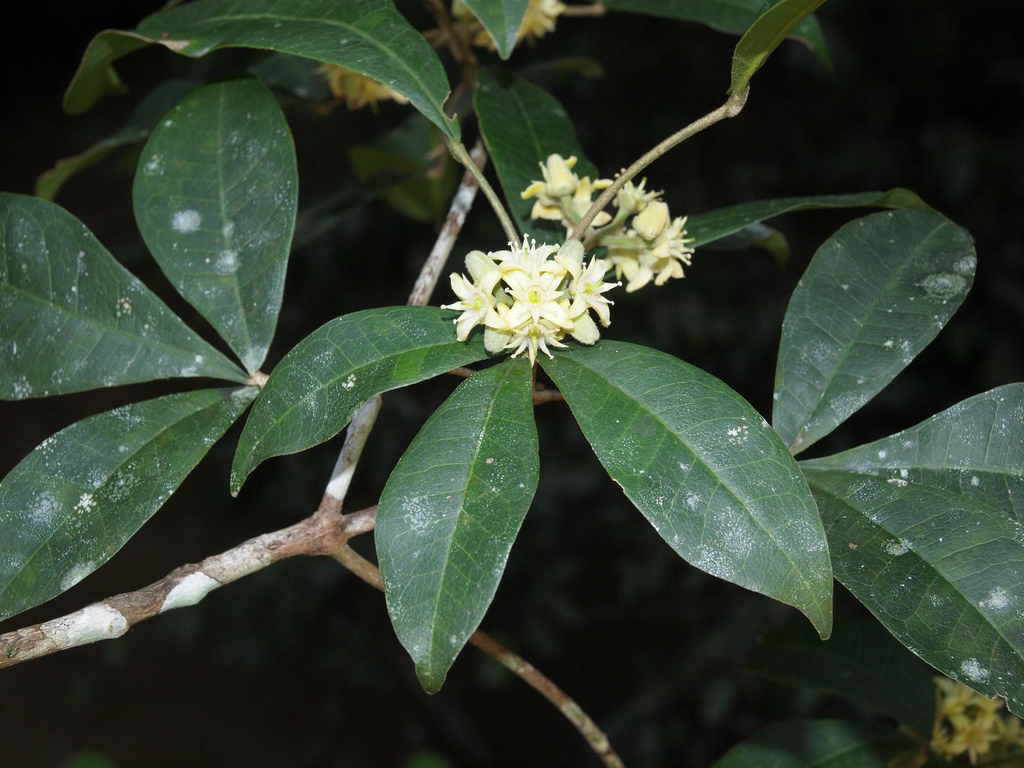Hairy acronychia
(Acronychia pubescens)

Description
Acronychia pubescens grows as a small tree up to 15 metres (50 ft) in height and with a stem diameter of 18 cm (7 in). The trunk is mostly cylindrical, but occasionally with flanges at the base. Bark is greyish brown and relatively smooth. Small branchlets are downy, of a golden colour. Leaf scars easily noticed. The leaves usually form in threes, occasionally in ones or twos. The compound leaves are arranged oppositely on the stem. The leaf stem is between 0.8 and 8 cm long. Leaflets are 5.5 to 22 cm long and 1.8 to 7.7 cm wide, without leaf stems. They are lanceolate in shape, with a blunt point, though occasionally the point will be sharper; the top surface of the leaflets is downy, particularly along the mid-rib, but they are hairier under the leaf. Oil dots are not visible. Leaf veins easily noticed, particularly under the leaf. The mid-rib is usually sunken on the top side, and all veins raised under the leaf. The greenish fawn flowers form from March to June in lateral or axillary cymes. The cymes are around 25 cm (10 in) long, and individual flowers are hairy and 8 mm long. The hairy leaves distinguish them from other members of the genus. The fruit matures from January to March, but ripe fruit may also be found in all months. The fruit is hairy, fleshy and ridged, a yellow drupe, 2.5 cm (1 in) in diameter, with an acid or turpentine flavour. There are one to three seeds per fruit. Seeds are a dark grey or black, with a shape resembling a miniature canoe. Removal of the flesh from the seed is advised for regeneration. Around a half of the seeds may germinate in seven months. Cuttings may also be attempted
Taxonomic tree:







